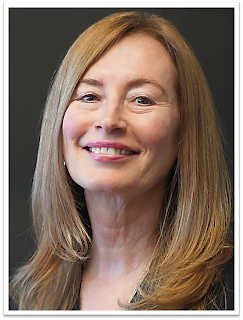By: Lynn Madden, PhD, MPA
Kristina Spannbauer, Communications
Specialist for Great Lakes ATTC, MHTTC, & PTTC
In 2003, the NIATx model was first used by 39 providers, each managing their own pilot project as part of the grant-funded Paths to Recovery and Strengthening Access to Treatment and Recovery programs. Dr. Lynn Madden and her team at the APT Foundation managed one of these pilot projects, and she has been a NIATx coach ever since. In honor of the 20th anniversary of NIATx, we asked Dr. Madden to share how NIATx has grown over the years and the impact it has had on an international scale.
Thinking
back to 2002 or 2003, when your organization first heard about NIATx, what inspired you to apply to be one
of the first grantees?
I was at Acadia Hospital, which is a
psychiatric hospital in Bangor, Maine that serves people for both substance use
disorders and other mental health issues. We were at the beginning of what was
clearly a growing issue with opioids and yet our substance use treatment
programs were empty. So, when I saw the call for proposals, I thought, [NIATx]
is exactly what we need to try to reduce waiting time, increase admissions, and
ultimately increase continuation.
As it turned out, we were awarded the NIATx
grant, and Dr. Dave Gustafson became our coach. In our first change project, our
team's approach to reducing wait times was pretty straightforward — if someone
qualifies for this program, just let them in. At the time, we had ample staff
and resources, so we tried it and it really worked. Our waiting time decreased,
and we had three times as many patients as we did before using NIATx.
I am personally highly invested in practical solutions, so within 12 months after I was introduced to this approach, I became a coach and consultant. I've been able to contribute to the development of NIATx as it has grown over time.
It's pretty amazing how NIATx has evolved over the past two decades. Since you first became a NIATx coach and consultant, you've expanded the use of NIATx throughout the US and internationally, as well. What is it that allows this process to be so adaptable and successful in different environments?
One of the key ideas of NIATx is that you select an aim, and the aim is related to improving the customer's experience. It's not implementation for implementation's sake. There is also this amazing parallel process that I think is what fundamentally distinguishes NIATx from other kinds of implementation frameworks. That is the way NIATx allows us to improve service delivery and client outcomes while increasing the strategic advantage of the organization overall.
A NIATx change team is designed to include the voices, thoughts, and experiences of folks working at all levels of an organization as well as the needs of the customer. How has this concept translated when applying the model on a larger scale or in international settings?
We started working in Ukraine in 2014. I was requested
to lead a NIDA grant funded NIATx collaborative of Ukrainian chief
physicians and stakeholders representing communities across the country with
the aim of addressing opioid use disorder. One of the first things we did was a
series of nominal group technique exercises, which was
something they had never done before. A key feature of the nominal group
technique is everyone has a voice. Everyone has an opportunity to speak. The
result of our team using the nominal group technique was that we were able to
create a series of public health priorities related to the treatment of substance
use disorders, and these priorities were shared with the Ministry of Health in
Ukraine.
One of the most valuable long-term outcomes of
this NIATx collaborative is the network of practice they built with each other
and maintain to this day – even throughout the extreme challenges and
widespread public health crises caused by the war in Ukraine. This group
adopted NIATx tools. They used the findings from nominal group technique to
focus their efforts. Thanks to their continued work, today approximately 70% of
Ukrainians who use medications to treat opioid
use disorders (MOUDs)
have access to take-home medications. In 2014, before the initial NIATx change
team convened and offered their recommendations to the Ministry of Health, the
number of people with take-home MOUDs was zero.
We are still working with them, by the way. Something I would really like to share is that this collaboration of physicians has continued to increase the number of patients receiving treatment throughout the war. They go to work in places that are not very safe. None of them have stopped working unless their entire facility has been bombed, which has happened in a couple of places. In which case, they move to another part of the country, and they keep working. They consider providing their patients with the healthcare they need to be well as their national duty. That is an amazing demonstration of dedication and fortitude.
Do you have any final thoughts or advice you'd like to share?
Participating in that first NIATx grant and
developing a working relationship with Dave Gustafson has profoundly impacted
my life and career. I think he is a transformational person, and the NIATx
model has been transformational to my professional experience and to those who
I've coached since I first learned about it.
I also want to mention that I recently co-wrote a grant with some folks in Lima, Peru that is heavily focused on using NIATx in a learning collaborative setting. Lima was awesome, and it's exciting that we keep finding new opportunities to share this approach to process improvement with organizations and communities who are eager to make a difference.
Read more about Dr. Madden's work:
· Collaborative
learning and response to opioid misuse and HIV prevention in Ukraine during war (The Lancet Psychiatry, 2022)
· Extending
a lifeline to people with HIV and opioid use disorder during the war in Ukraine (The Lancet Public Health, 2022)
· Rapid
transitional response to the COVID-19 pandemic by opioid agonist treatment
programs in Ukraine (Journal of Substance
Abuse Treatment, 2021)
· The
development and initial validation of the Russian version of the BASIS-24 (Addiction Science & Clinical Practice, 2022)
· Using nominal group technique among clinical providers to identify barriers and prioritize solutions to scaling up opioid agonist therapies in Ukraine (International Journal of Drug Policy, 2017)
Lynn M.
Madden, PhD, MPA
Dr. Madden’s work focuses on identifying treatment gaps in substance abuse/mental health treatment and improving both access to services and retention in treatment, with an emphasis on inclusion of marginalized persons and integration with primary care/treatment for infectious diseases such as HIV/AIDS and HCV. She is affiliated with Yale School of Medicine, Internal Medicine - AIDS. Since 2006, she has served as Chief Executive Officer of APT Foundation, a non-profit agency founded in 1970 by members of the Yale School of Medicine Department of Psychiatry. Under her leadership, APT has grown from serving 1,300 persons to over 8,000 persons every year regardless of ability to pay. Dr. Madden is also a consultant and NIATx Coach working throughout the United States since 2004, Ukraine since 2014, and Central Asia since 2021, specializing in improving treatment access and program outcomes through the use of implementation science frameworks.
REFERENCES
Altice, F. L., Bromberg, D. J., Klepikov, A., Barzilay, E.
J., Islam, Z., Dvoriak, S., ... & Madden, L. M. (2022). Collaborative
learning and response to opioid misuse and HIV prevention in Ukraine during
war. The Lancet Psychiatry, 9(11), 852-854.
Altice, F. L., Bromberg, D. J., Dvoriak, S., Meteliuk, A.,
Pykalo, I., Islam, Z., ... & Madden, L. M. (2022). Extending a lifeline to
people with HIV and opioid use disorder during the war in Ukraine. The
Lancet Public Health, 7(5), e482-e484.
Madden, L., Bojko, M. J., Farnum, S., Mazhnaya, A., Fomenko,
T., Marcus, R., ... & Altice, F. L. (2017). Using nominal group technique
among clinical providers to identify barriers and prioritize solutions to
scaling up opioid agonist therapies in Ukraine. International Journal
of Drug Policy, 49, 48-53.
Madden, L. M., Farnum, S. O., Bromberg, D. J., Barry, D. T.,
Mazhnaya, A., Fomenko, T., ... & Altice, F. L. (2022). The development and
initial validation of the Russian version of the BASIS-24. Addiction
science & Clinical Practice, 17(1), 65.
Meteliuk, A., de Leon, S. J. G., Madden, L. M., Pykalo, I.,
Fomenko, T., Filippovych, M., ... & Altice, F. L. (2021). Rapid
transitional response to the COVID-19 pandemic by opioid agonist treatment
programs in Ukraine. Journal of Substance Abuse Treatment, 121,
108164.



No comments:
Post a Comment